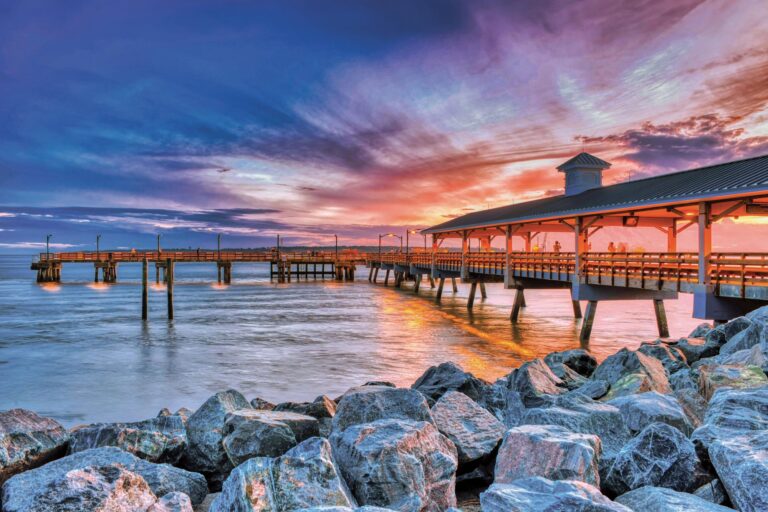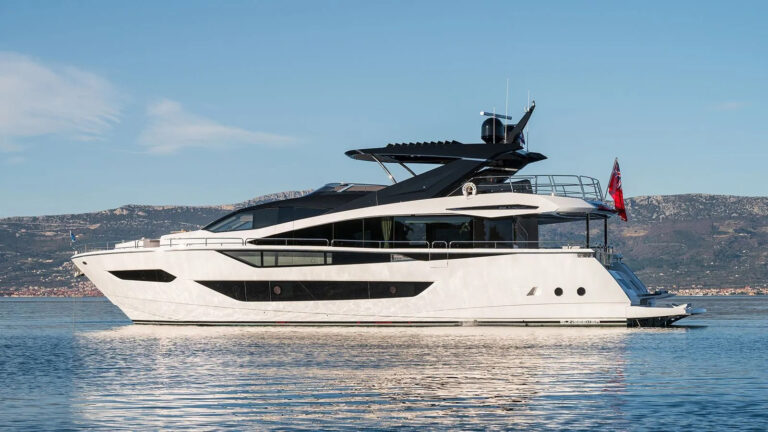With more than 40 years of saltwater cruising under my sea boots, I’ve come to understand that preparation is directly related to success.
Cruising skippers just returning from a globe-girdling voyage are asked, “How was it? Those who reply, “No problems-a piece of cake, are always the ones who invested time and effort to fully prepare themselves and their yacht. Skippers with hair-raising tales of near disaster are the ones who figured it would all work out somehow. The Nordhavn Atlantic Rally, co-sponsored by Yachting and Motor Boating magazines, is a fine example of how careful planning and preparation are directly proportional to an uneventful voyage.
A major factor in the Rally planning and preparation was the Operations Manual given to each of the 20 yachts in the 3,800-mile cruise from Florida to Gibraltar. This treatise is a not-so-short course on how to think of everything before you go.
The two basic elements of successful preparation are crisis avoidance and crisis management. Crisis avoidance seems self-explanatory: plan ahead to stay out of trouble. Don’t, for example, set off in hurricane season. Have your engine serviced before departure. Carry all the charts you might need.
Crisis management, on the other hand, is the result of our old friend Murphy, whose law states that whatever can happen, will happen. When Murphy’s Law strikes, the difference between the well-prepared skipper and the unprepared skipper is that the problem is simply a minor glitch for one and a major crisis for the other.
Let’s look at crisis avoidance to start. One of the first points required of all skippers in the Rally is a survey of their yacht. Whether you’re leaving for a one-year cruise or planning a summer on the water, an out-of-water survey by a competent professional marine surveyor is a good starting point. Almost inevitably, the surveyor will find a few things that need doing, ranging from the minor (outdated flares or fire extinguisher) to major (a leaking prop shaft or through-hull fitting). Fix them now.
A second requirement of the Rally is a minimum 600-mile qualifying passage, which is equally valuable to the independent cruiser. If more skippers had taken an extended offshore passage before setting sail around the world, fewer boats would be for sale in Mexico, Hawaii and other far-flung destinations. You may discover on this voyage that long-distance cruising isn’t for you, in which case, you can redirect your efforts to closer destinations.
A qualifying passage is going to provide you with real-world information. Your fuel consumption, for example, is likely to be considerably different offshore from that in the shallower flat water. Your speed is going to be different in real seas than in a chop. And you should take the time to practice drills, such as man-overboard procedure and launching the life raft. Even a task, such as checking the engine oil, that is so simple in calm seas may be frighteningly dangerous in big ocean swells.
Now is the time to find out before you start your real cruise, and your qualifying cruise should always bring you back to your home port so you can sort out what you’ve learned and address any issues. Too many skippers use the first leg of their world cruise as the qualifier, only to spend time and money fixing problems in a distant port.
One of the most successful cruising skippers I ever met had a foolproof plan for preparing his boat, and he called it the “What Ifs. He spent days going around his boat, looking at every part, system and fitting, and saying to himself, “What if this failed/broke/stopped? While doing his What Ifs, he made long lists of spare parts, tools, and other items he would need to answer the question, “What if ? The process let him consider solutions to problems long before they occurred, giving him peace of mind.
This leads naturally to redundancy, and Jim Leishman of Nordhavn, who wrote the Ops Manual, addresses the topic succinctly: “The most capable ocean-crossing yachts are those with built-in redundancy. In the manual, Leishman lists steering, bilge pumps, running lights, fuel system, battery charging, electronics, freshwater systems, heads, generators, inverters, refrigeration and galley range as the most important systems to back up.
At some point, however, you have to stop preparing and start doing. Once you are offshore, you need to be ready for Crisis Management. The very essence of crisis management is to have the spare parts you need, the tools to install them, and the knowledge required to use both.
I sailed on one TransPacific Yacht Race with a skipper whose name might well have been Crisis Management, and the key to his success was The Book. It was the bible for anything we needed to know about this yacht. Since we were from many yachts, none of us knew this particular yacht in detail, but we always had The Book.
It was simply a ring binder full of loose-leaf pages organized by dividers into categories. If, for example, we couldn’t find a particular spare part or, more likely, the corkscrew, The Book would tell us they were in Locker #17 and Drawer G.
But more important, it walked us through a crisis before it happened. When a fitting at the top of the mast disintegrated, we brought out The Book. In it was a photograph of the masthead, with notations that showed I’d need a 9/16-inch wrench for one bolt, a pair of needle nose pliers to take the broken fitting apart, and the replacement nut was 1/4-20 thread. Without The Book, I’d have gone up the mast with a shotgun collection of tools and, if I needed more, I’d have to struggle with having them sent up on a messenger line.
Don’t just focus your avoidance and management skills on the yacht, but include yourself as part of the equation. If you aren’t comfortable replacing a diesel injector, take one of the classes offered by your engine manufacturer to teach those basic skills.
For too many skippers, cruising is synonymous with spontaneity, and they treasure the ability to linger for weeks in one place or simply set off for new horizons. Planning shouldn’t impose on your spontaneity but, rather, it should complement it. If your pre-departure planning suggests that the winds will be less friendly starting in August, temper your spontaneity with the knowledge you need to get moving before then.
No cruise will ever be flawless from start to finish, and there will always be little speed bumps in the course of a voyage. Each one will be a test of your preparation and, if you invest the time and effort to prepare yourself and your yacht, each will remain just that-a little bump that is hardly worth mentioning later.
SPARE PARTS LIST
Nordhavn Atlantic Rally 2004 The following list has been recommended to the yachtsmen who have entered this open-water rally. Although some items are specific to Nordhavns, the rest apply to any yacht. Members of Yachting’s staff will be aboard for the entire voyage, so look for reports in upcoming issues to see if any of these parts saved the day.
Main Engine, Wing Engine and Generators
Fuel filters – oil filters – air filter and cleaning kit – thermostats and gaskets – belts – starter and solenoid – stop solenoid – alternator – voltage regulator – lift pump – impellers – cooling system zincs – workshop manual and parts catalog.
Pumps
A complete primary bilge pump – rebuild kits – waste discharge pump – fuel transfer pump – freshwater pressure pump – toilet repair kit for every toilet on the boat.
Electrical
Automotive fuses – battery switches – assorted breakers – fuses in 5-amp increments from 5 amps to 50 amps – double pull 20-amp fuse – double pull 30-amp fuse – alligator clips – connector kit – class T fuses 400 amp – class T fuses 250 amp – miscellaneous fuses peculiar to your boat – automotive solenoid.
Fluids
ATF power-steering fluid – coolant appropriate to the engine manufacturer’s specs – up to six 5-gallon buckets of ISO 32 hydraulic fluid – 10W-40 motor oil for Naiad stabilizers – engine oil – diesel-fuel treatment – 80-90W gear lube or other transmission lube as specified by the maker.
Zincs
Bottom, hull – keel cooler – propeller shaft – rudder shoe – pencil zincs – spurs.
Miscellaneous
Spare hoses for all applications on your boat, plus primary hoses for the engines – grease gun – fastener kit – hose clamp kit – wiper blades – spare baskets and seawater strainers – gaskets for seawater strainers – Whale hose and connectors (equal T, equal elbow, equal straight, stem adapter, shut-off valve) – batteries and bulbs for flashlights – extra binoculars – backup GPS – handheld VHF – hydraulic ram for steering system – seals for steering system.
Bulbs
Anchor light – running lights – deck lights – spot light – sockets for running lights – cabin lights – engineroom lights.









